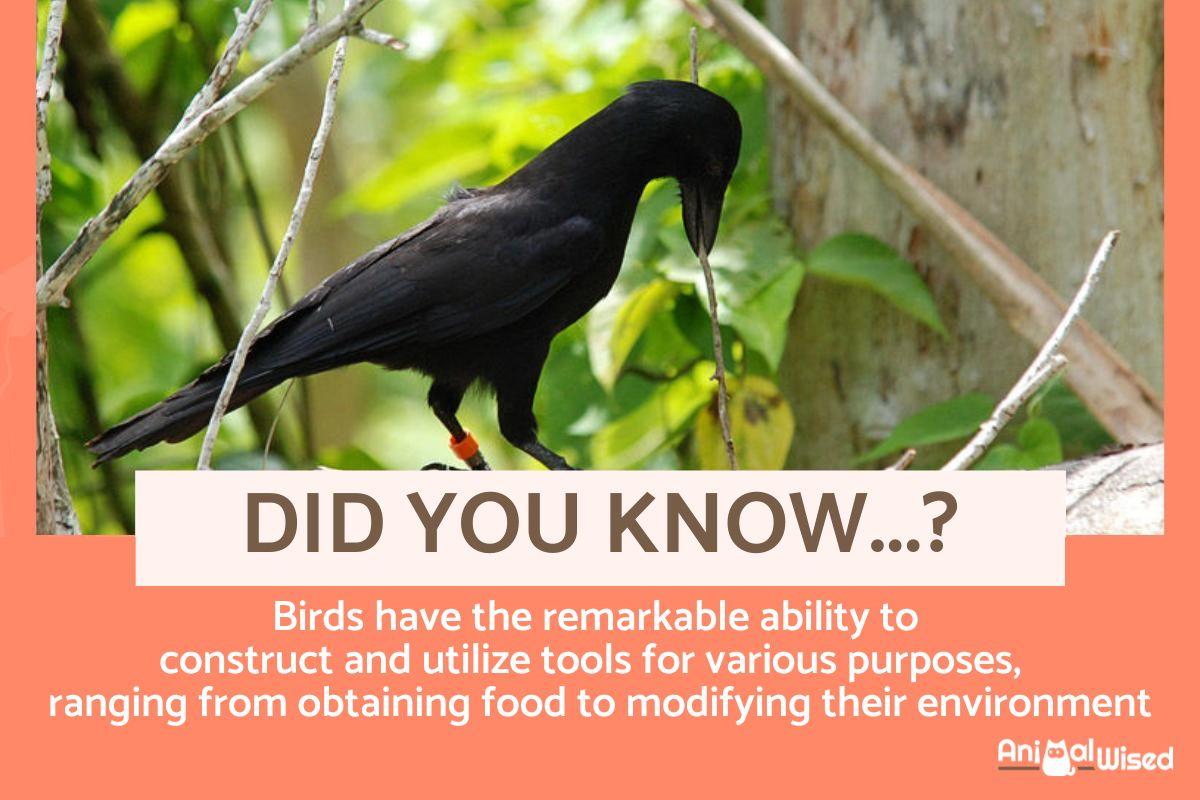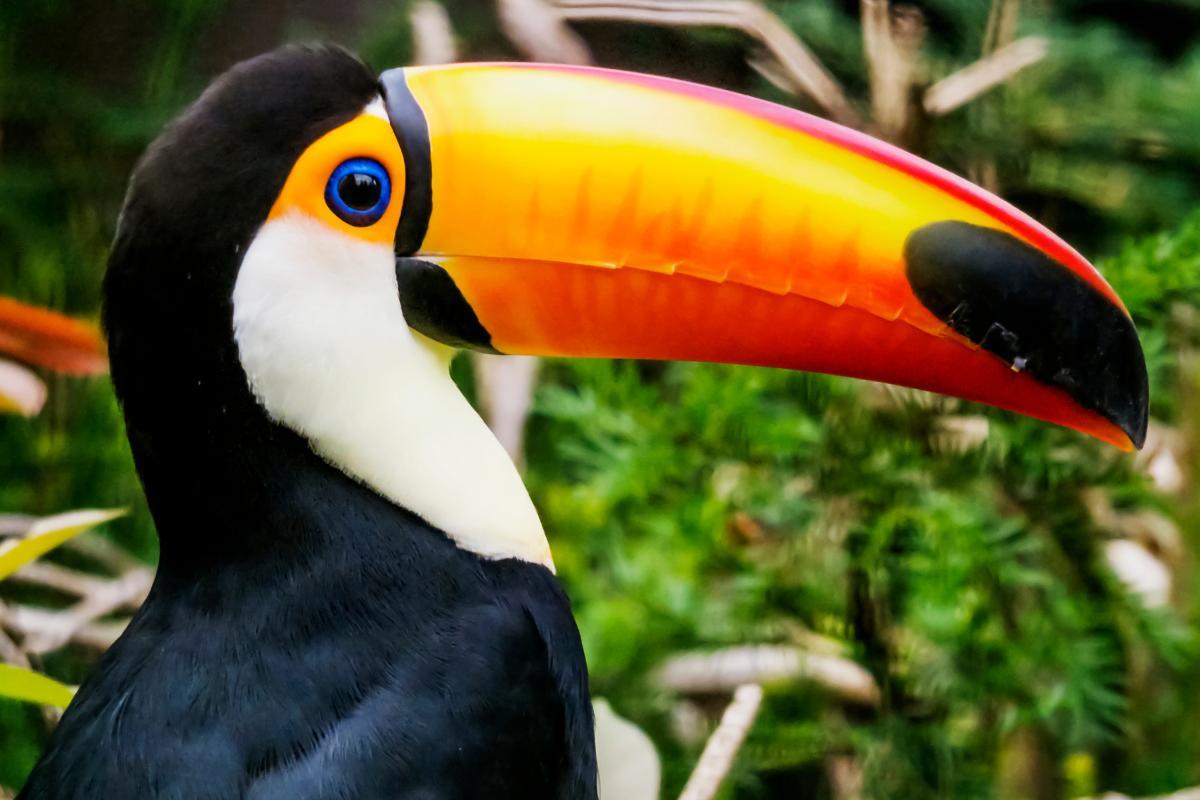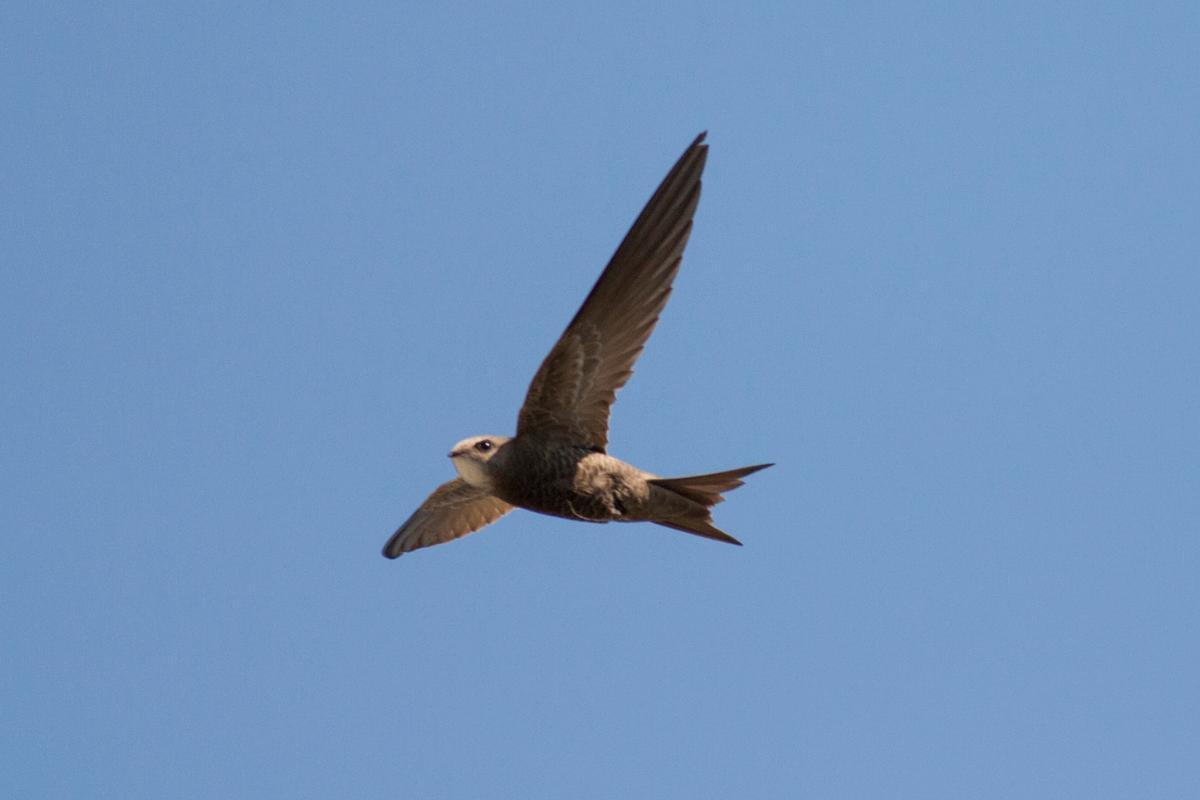Interesting and Fascinating Bird Facts


Birds exhibit an astonishing diversity in terms of species, habitats, sizes, shapes, behaviors, and adaptations. With over 10,000 known species worldwide, birds can be found in virtually every corner of the globe. Birds have diversified their behaviors to occupy various ecological niches. From their exceptional skills in building nests to their astonishing migrations, from the diversity of their beaks to the vibrant colors that adorn their feathers, birds captivate our imagination with their awe-inspiring abilities.
In this AnimalWised article, we have listed 15 of some of the most extraordinary facts about birds.
- Birds are masters of building very elaborate nests
- Birds exhibit the ability to embark on exceptional migrations
- Birds showcase a diverse range of beak adaptations
- Certain bird lay eggs that are the largest in proportion to their body size
- Birds display a vibrant array of colors
- Birds possess an impressive talent for imitating sounds
- The bee hummingbird is the smallest bird
- Birds excel as adept foragers
- The common swift spends the most time flying among all birds
- Certain bird species can build and utilize tools
- Certain birds produce exceptionally loud sounds
- Birds feign illness as a defensive tactic
- Some bird species can be toxic or poisonous
- The ostrich is the fastest running bird
- The peregrine falcon is the fastest in flight
Birds are masters of building very elaborate nests
The baya weaver, scientifically known as Ploceus philippinus, is a remarkable bird that constructs the most intricate and elaborate nests in the animal kingdom. Native to Asia and the Pacific regions, these avian architects are renowned for their extraordinary nest-building abilities, which result in the creation of awe-inspiring structures.
Using primarily leaves and grass, male baya weavers craft bag-shaped nests that hang delicately from the branches of trees.
The construction process begins with the weaving of a foundation, accomplished by skillfully intertwining long strands of grass. With meticulous precision, the males then weave and stitch green leaves into the framework, employing natural needles fashioned from thicker grass stalks.
The entire endeavor can take several days, and in some cases, even weeks to complete. Interestingly, the construction of these nests is exclusively undertaken by the males, who dedicate themselves to this arduous task in order to attract potential mates.
The baya weaver nests are not only visually captivating, but also serve a functional purpose. These nests feature a top entrance and an interior chamber where the female will lay her eggs and nurture her offspring. Designed with exceptional strength and durability, the nests are built to withstand harsh weather conditions and provide protection against predators.
Furthermore, the significance of baya weaver nests extends beyond their reproductive function. They serve as vital secondary habitats for other bird species and small animals. These abandoned nests offer a safe haven for various creatures, including lizards, which seek refuge within their intricate structures. Thus, the baya weaver nests play a crucial ecological role by providing additional habitats and contributing to the overall biodiversity of their surroundings.
Learn more about bird nest in this other article on different types of bird nests.

Birds exhibit the ability to embark on exceptional migrations
The Siberian Plover, scientifically known as Charadrius asiaticus, embarks on a truly remarkable migration that stands as one of the most extraordinary journeys in the animal kingdom. These plovers undertake an epic round-trip migration, traveling from the Arctic all the way to South Africa, covering immense distances in their annual migration.
During the summer months in the Arctic, these birds breed and raise their young near rivers and lakes. As winter approaches and food becomes scarce, they commence their arduous journey southward.
What sets the Siberian Plover apart is its unique migratory pattern, which involves a zigzag route rather than a direct path. Along the way, they make strategic deviations to the east and west, making stops at various locations. This behavior allows them to take advantage of the most abundant food sources and rest in key areas during their long and demanding migration.
Spanning over 20,000 kilometers, the migration of the Siberian Plover is one of the longest recorded migrations in the animal kingdom. Throughout their journey, these birds encounter a multitude of challenges. They must navigate vast deserts, traverse bodies of water, and overcome natural obstacles along with the additional hazards posed by human activity.
Do not miss this other article where we have listed over 20 incredible animals that also migrate.

Birds showcase a diverse range of beak adaptations
When it comes to fascinating and peculiar beaks in the animal kingdom, the toco toucan (Ramphastos toco) stands out as one of the birds with the most specialized beaks.
In proportion to its body, the toco toucan possesses one of the largest beaks among birds, accounting for approximately one third of its total size.
Despite its large and seemingly heavy appearance, the toucan's bill is relatively lightweight due to its internal structure. It is spongy and trabeculated, resembling a net-like pattern, providing both rigidity and resistance while keeping its weight to a minimum. Layers of keratin further reinforce the structure, making the beak strong and durable.
Moreover, the toco toucan's beak is adorned with vibrant colors, including shades of yellow, orange, and red. This striking coloration serves an important role in courtship displays and visual communication among toucans, adding to their unique beauty.
The remarkable length of the toucan's beak allows it to access fruits on distant branches that may be out of reach for other birds. Additionally, the serrated edges of the beak enable the toucan to feed on the eggs and chicks of other birds, as well as prey on lizards and even small rodents. This versatility in their diet is supported by the specialized structure of their beak.
Beyond its feeding adaptations, the toco toucan's bill also plays a crucial role in communication and social behavior. Toucans utilize their bills to produce a variety of vocalizations, enabling them to communicate with their conspecifics. They also engage in drumming behavior by striking their bills against tree trunks, creating distinctive sounds. These behaviors are integral to their social interactions and territorial displays.

Certain bird lay eggs that are the largest in proportion to their body size
The kiwi, belonging to the genus Apteryx, boasts the distinction of laying the largest egg relative to its body size among all bird species.
This flightless bird is indigenous to New Zealand. Despite its small stature, the kiwi produces an egg that is remarkably large compared to its body, often reaching up to 25% of the female's size. The specific size of the egg can vary depending on the kiwi species, but it can measure between 10 and 20 centimeters in length. This is noteworthy considering that the kiwi's body typically ranges from 30 to 40 centimeters in length.
The unusually large size of the kiwi egg can be attributed to the unique reproductive and developmental conditions of this species. The female kiwi lays a single egg at a time, and it is the male's responsibility to incubate it. The larger egg provides a greater reserve of nutrients for the growing embryo. Furthermore, the size of the egg may be a result of historical predation in New Zealand, where the eggs of land birds were targeted by large extinct birds and introduced mammals. Evolution may have favored larger egg sizes as an adaptation to enhance the survival chances of the hatchlings.
Be sure to check this other article if you want to learn more about kiwis and their habitat.

Birds display a vibrant array of colors
The incredible plumage of birds has captivated humans for centuries, with many species showcasing breathtaking and vibrant colors. Among the avian wonders, Wilson's bird-of-paradise (Cicinnurus respublica) stands out with its truly remarkable plumage. The male of this species exhibits a combination of intense and striking colors that make it a standout among the birds of paradise.
The male Wilson's bird-of-paradise boasts a mesmerizing display of plumage. Its chest is adorned with shield-shaped feathers that are a deep and brilliant shade of red, exuding a sense of richness and vibrancy. Furthermore, the male sports an iridescent metallic blue breast, which provides a stunning contrast to the vibrant red plumage. The rest of its body is a sleek black, serving as a dramatic backdrop that enhances the vivid colors.
Additionally, the male Wilson's bird-of-paradise possesses an extraordinary tail, which is long and shiny. Composed of elongated and curled feathers, the tail plays a significant role during courtship displays. It is primarily black with distinct white bars, adding another element of beauty and intrigue to its overall appearance. The combination of vibrant hues, intricate feather patterns, and unique tail structure make the male Wilson's bird-of-paradise a true spectacle of nature.
It is worth noting that the females of this species exhibit a more understated appearance. Their plumage is predominantly brown, allowing them to blend more seamlessly into their natural surroundings. This subtle coloration serves as a camouflage, providing protection and increased chances of survival for the females and their offspring.
The stunning and colorful plumage displayed by male birds, including Wilson's bird-of-paradise, serves a primary purpose: courtship and mate attraction. During the mating ritual, males engage in elaborate displays that involve flying maneuvers and intricate dance-like movements. They proudly showcase their magnificent plumage to impress and captivate the attention of potential female mates. This visually stunning display acts as a key factor in securing successful courtship and reproductive success.

Birds possess an impressive talent for imitating sounds
The ability of birds to mimic sounds is indeed a fascinating curiosity, and the Superb lyrebird (Menura novaehollandiae) is a standout among them. Native to Australia, the lyrebird is renowned for its exceptional talent in imitating a vast array of sounds, making it one of the best sound-mimicking birds in the avian world. This ability is especially pronounced in male lyrebirds, who utilize it as an integral part of their intricate mating displays.
During the breeding season, male lyrebirds construct and maintain cup-shaped display structures on the forest floor. It is within these carefully crafted arenas that they showcase their impressive vocal talents.
The vocal mimicry of the lyrebird is truly extraordinary. These remarkable birds can mimic the songs of a wide variety of birds, capturing the nuances and intricacies of their melodies. Moreover, they have the remarkable capability to imitate sounds from their surrounding environment, including the mechanical noises of cameras, car alarms, electric saws, and more.
Perhaps most astonishingly, lyrebirds can even replicate human voices, capturing snippets of speech and incorporating them into their vocal performances.
The lyrebird's vocal repertoire stands as one of the most extensive and complex among all bird species. This remarkable ability is a result of their exceptional auditory learning skills. Lyrebirds possess an innate talent for accurately memorizing the sounds they hear in their environment and recreating them with astonishing precision.
They continually adapt and expand their repertoire as they encounter new songs and sounds, displaying an incredible capacity for auditory learning and vocal mimicry.

The bee hummingbird is the smallest bird
The bee hummingbird, zunzuncito or Helena hummingbird (Mellisuga helenae), holds the distinction of being the smallest bird in the world.
This particular species of hummingbird is endemic to Cuba. Measuring only around 5.5 centimeters in length and weighing a mere 2 grams, it is truly a marvel of minuteness.
Despite its small stature, the hummingbird possesses remarkable characteristics and abilities that set it apart. Its most extraordinary feature lies in its ability to fly. With wings capable of flapping at an astonishing rate, the hummingbird can achieve speeds of up to 80 flaps per second. This impressive wing speed enables the hummingbird to remain suspended in the air, hover with precision, and maneuver with remarkable agility in any direction.
The diet of the hummingbird primarily consists of nectar from flowers. Although its slender bill is adapted for reaching the nectar in the smallest and tubular flowers, the hummingbird supplements its diet with small insects and spiders as well.
Despite its diminutive size, the hummingbird plays a significant role in pollination. As it feeds on the nectar of flowers, it inadvertently transfers pollen from one bloom to another, aiding in the reproductive cycle of various plant species. This mutualistic relationship between the hummingbird and the flowers it frequents contributes to the balance and conservation of the ecosystem in which it resides.

Birds excel as adept foragers
Birds exhibit a remarkable array of behaviors, and the blue jay (Cyanocitta cristata) stands out for its fascinating food storage habits.
This social bird is native to North America and is well-known for its remarkable ability to collect and store food, particularly during the autumn months when resources are plentiful. While the capacity for food collection is often associated with mammals like squirrels, the blue jay showcases its own impressive capabilities in this regard.
One of the standout features of the blue jay is its exceptional spatial memory. These birds possess the remarkable ability to remember the precise locations of hundreds of hidden food caches. Using their strong and sharp beaks, they create small openings in the ground, tree trunks, or even human structures to conceal their food treasures.
Unlike other birds that may store food randomly, the blue jay's storage habit is characterized by its accuracy and precision. It can reliably recall the exact whereabouts of each cache, even after months or years have passed. This remarkable memory allows them to replenish their food reserves during times of scarcity when resources are most needed.
This hoarding behavior not only provides them with an additional food source during lean periods, but also has significant implications for seed dispersal and plant growth in their environment. Some of the seeds that the blue jay stores may be forgotten, allowing them to germinate and contribute to the growth of new plants.
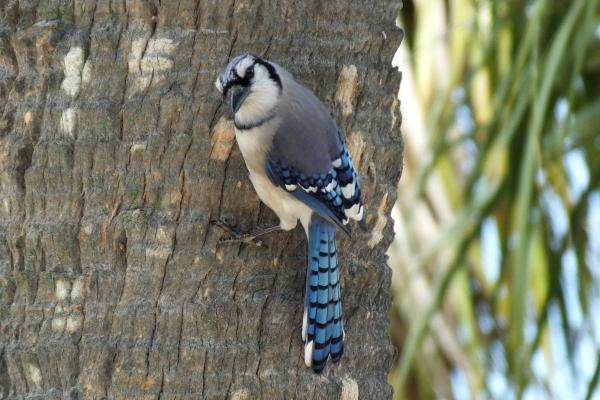
The common swift spends the most time flying among all birds
The Common Swift (Apus apus) showcases an extraordinary feat in the avian world with its remarkable ability to spend an extended duration continuously flying. This small bird is renowned for its swift and agile flight, capable of reaching impressive speeds of up to 135 kilometers per hour. With its sleek body and long, pointed wings, the Common Swift maneuvers through the air with remarkable agility.
The Common Swift is highly adapted to spend extended periods in flight without the need for rest. It is estimated that these birds spend more than 90% of their time in flight, a feat unparalleled among other bird species.
Their flight strategy revolves around utilizing rising air currents, such as thermals and convective currents, which allow them to effortlessly soar through the sky for hours and even days without touching the ground. This continuous flight is further facilitated by their insectivorous diet, as they capture insects on the wing, including flies, mosquitoes, and moths.
During the breeding season, the Common Swift constructs its nests on vertical surfaces such as cliff faces or buildings. Even during this critical phase, they minimize their time spent on land and only briefly land to lay their eggs and provide nourishment to their young. There have been suggestions that they may even engage in mating while in flight, emphasizing their unwavering commitment to a life in the air.
Notably, the Common Swift embarks on long-distance migratory journeys during seasonal movements. During migration, these birds demonstrate unparalleled endurance, as they fly continuously for days or even weeks without taking a break. This endurance flight showcases their specialization in aerial navigation and highlights their incredible adaptation to the aerial environment.
Do not miss this other article where we explain the differences between swallows, sifts and martins.

Certain bird species can build and utilize tools
The intelligence and problem-solving skills of ravens, particularly species like the Common Raven (Corvus corax) and the New Caledonian crow (Corvus moneduloides), are truly remarkable. These birds have demonstrated an impressive capacity for tool construction and usage, showcasing their cognitive abilities in the avian world.
An outstanding demonstration of their tool use is the extraction of insect larvae from tree trunks using hooked branches. The New Caledonian crows select a branch with a hook-like shape, modify it by biting or breaking a portion, and employ it as a tool to "fish" for the larvae. This behavior highlights their understanding of the physical properties of objects and their ability to modify them to suit a specific purpose.
The tool construction and utilization exhibited by ravens represent advanced problem-solving skills and indicate a level of cognitive flexibility not commonly observed in the animal kingdom. These birds display an understanding of cause and effect relationships, an ability to devise creative solutions, and a capacity to adapt their tools to varying circumstances.
Furthermore, studies have revealed that ravens can exhibit planning behavior, indicating their ability to anticipate future needs and strategize accordingly. They have been observed storing and reusing tools for future use, demonstrating foresight and an understanding of tool functionality beyond immediate requirements.
Source: oiseaux.net

Certain birds produce exceptionally loud sounds
The Three-wattled bellbird, scientifically known as Procnias tricarunculatus, is indeed renowned for its incredibly loud call, making it one of the loudest birds in the world. This species is native to the tropical forests of Central and South America, primarily found in regions such as the Amazon.
The bellbird's call is a distinctive and resonant sound that can reach extraordinary levels of up to 125 decibels. To put this into perspective, 125 decibels are equivalent to the noise produced by a jet engine at a close distance. The call of the bellbird is produced by the males, primarily during the breeding season, as a means of attracting females and establishing their territory.
The sheer volume of the bellbird's call allows it to be heard over long distances. It is reported that the sound can travel up to approximately 3 kilometers within the dense jungle environment. This impressive vocalization serves as a powerful acoustic signal that effectively carries through the forest, alerting other birds of their presence and signaling their breeding intentions.
The loudness of the bellbird's call is made possible by specialized vocal anatomy. They possess unique vocal organs, including a greatly enlarged trachea and a well-developed vocal sac, which act as resonating chambers, amplifying the sound produced by the bird.
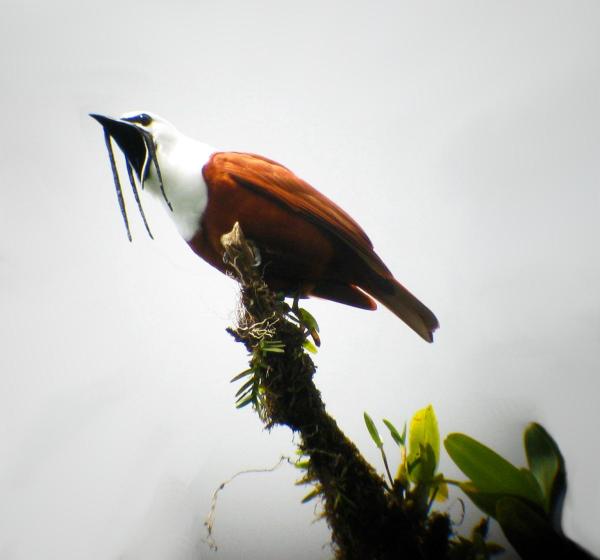
Birds feign illness as a defensive tactic
In the avian world, fascinating strategies for survival have evolved over time, and one such tactic involves feigning illness. Among the feathered creatures that employ this intriguing defense strategy is the southern lapwing, scientifically known as Vanellus chilensis. By simulating sickness, these birds effectively divert the attention of potential predators, safeguarding their vulnerable eggs or chicks.
When a predator approaches their nesting area, the bird skillfully assumes the role of a feeble and ailing creature. Through an intricate display of behavior, it deliberately presents itself as an easy target, aiming to confuse or distract the predator.
By executing this ruse, the bird lures the predator's attention away from its precious eggs or chicks hidden in the vicinity. The predator, enticed by the seemingly defenseless bird, becomes fixated on the apparent opportunity for an effortless meal. Unbeknownst to the predator, it has fallen for the womb bird's deceptive ploy, allowing the real treasures—the vulnerable offspring—to remain concealed and protected.
Be sure to read this other article, where we have listed other animals that have also learned to play dead.

Some bird species can be toxic or poisonous
While birds are not typically associated with venomous traits like some other animals, the Hooded pitohui (Pitohui dichrous), a fascinating species of bird native to the lush forests of Papua New Guinea, challenges this notion.
Unlike its avian counterparts, the pitohui possesses toxic substances within its skin and plumage, setting it apart from the majority of bird species. These substances, known as batrachotoxins, are believed to be acquired through the bird's diet, specifically by consuming insects that themselves feed on poisonous plants.
As the pitohui preys on these insects, it inadvertently ingests the batrachotoxins present in their bodies. Through a process called bioaccumulation, the toxic compounds gradually accumulate in the bird's system. Consequently, the capuchin pitohui becomes an unexpected carrier of these potent substances, acquiring a level of toxicity that is uncommon among avian species.

The ostrich is the fastest running bird
The ostrich (Struthio camelus) takes the crown as the fastest running bird. Residing in the expansive landscapes of Africa, this flightless avian species has evolved remarkable abilities for swift locomotion. With the ability to reach speeds of up to 70 kilometers per hour during long runs, the ostrich truly stands out in the avian world.
Being flightless does not deter the ostrich from becoming a master of land speed. Its powerful legs and formidable musculature enable it to propel itself forward with impressive force and agility. The ostrich's lengthy stride, spanning between 3 and 5 meters, contributes significantly to its exceptional speed. With each stride, it covers a considerable distance, surpassing the swiftness of most other birds.
It is worth noting that while the ostrich is renowned for its running speed, its stamina over long distances is equally remarkable. These majestic birds can sustain their swift pace for extended periods, making them well-suited for traversing the vast African landscapes.
The ostrich's incredible running prowess serves multiple purposes in its life. Primarily, it acts as a crucial defense mechanism against potential predators. When faced with danger, the ostrich's extraordinary speed allows it to outrun most predators, increasing its chances of survival. Additionally, during courtship rituals, male ostriches engage in competitive running displays, showcasing their speed and agility to attract mates.
Discover more about ostriches through this other article that explores the evolution and purpose of their wings.

The peregrine falcon is the fastest in flight
As we conclude our exploration of bird curiosities, we encounter the magnificent peregrine falcon (Falco peregrinus), renowned as the fastest bird in the sky.
This exceptional predator achieves incredible speeds during its hunting flights, reaching remarkable velocities of up to 389 kilometers per hour during high-speed dives. Even in regular flight conditions, the peregrine falcon maintains an average speed ranging between 65 and 90 kilometers per hour.
To maximize its velocity, the peregrine falcon skillfully exploits updrafts and air currents. By utilizing these natural forces, it can conserve energy and gain additional speed during its hunting flights. This strategic use of air currents enhances the peregrine falcon's efficiency, enabling it to cover large distances with remarkable swiftness.
The peregrine falcon's hunting technique is a marvel in itself. With impressive precision, it employs a swooping technique to pursue its prey in mid-flight. When it spots a potential target from above, the falcon enters a dramatic dive, known as a stoop. During this descent, it tucks its wings close to its body, further reducing drag and allowing for an accelerated freefall. With its keen eyesight locked onto the prey, the peregrine falcon hurtles towards its target at astonishing speeds. At the last possible moment, it spreads its wings wide and delivers a swift strike, capturing the prey in its talons.
Learn more about falcons and their amazing abilities in this other article, where we have listed the different types of falcons that exist.

If you want to read similar articles to Interesting and Fascinating Bird Facts, we recommend you visit our Facts about the animal kingdom category.
- Liao, K. (2019). Listen to the loudest bird ever recorded . Available at: https://www.audubon.org/news/listen-loudest-bird-ever-recorded
- Lovette, I.J., & Fitzpatrick, J.W. (Eds.). (2016). Handbook of bird biology . John Wiley & Sons.
- The 10 biggest birds in the world . (2023). Available at: https://www.birdspot.co.uk/bird-numbers/the-10-biggest-birds-in-the-world





